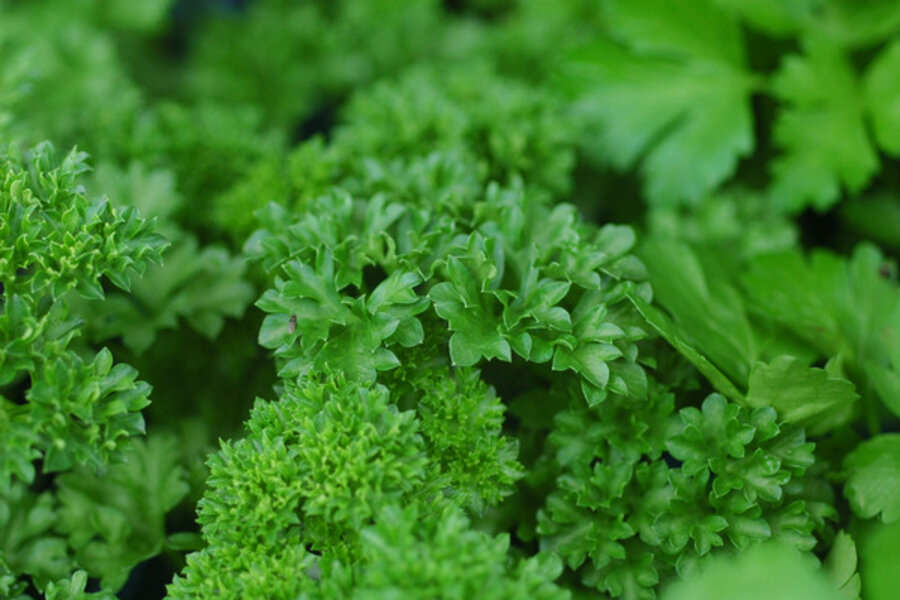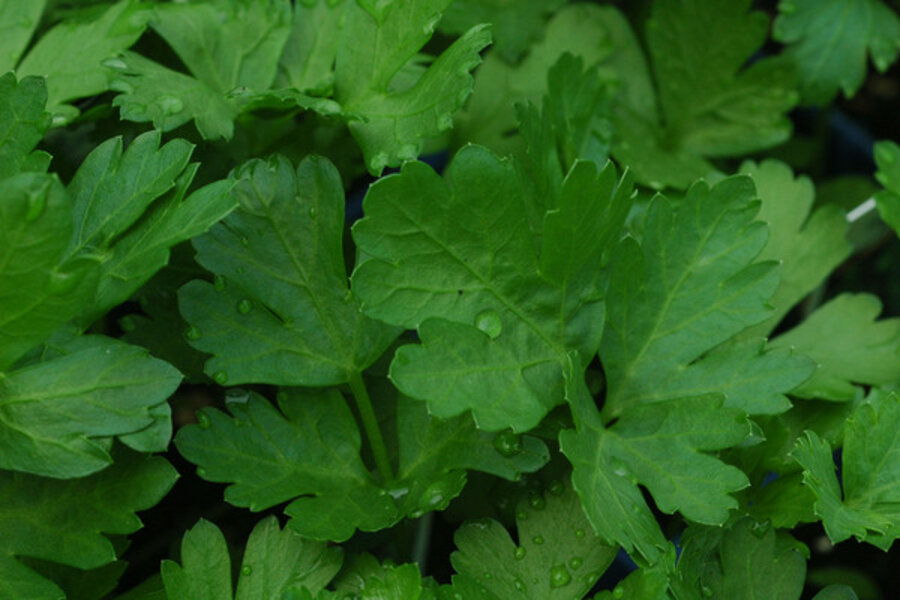Parsley, the last herb of fall
Loading...
America’s heightened interest in using herbs in the kitchen has moved parsley from a dinner plate garnish to a regular recipe ingredient. Parsley pesto —delizioso! Garlic-parsley chimichurri — delicioso!
At the moment, parsley is the only edible still edible in my Vermont garden. I grow Petroselinum hortens, Neapolitanum Group, which is flat-leafed parsley, aka single-leafed, plain-leaf, and Italian parsley. [See second photo above.]
Epicures consider it better flavored than curly-leafed parsley, which is also Petroselinum hortens but in the Crispum Group. I’m not sure my taste buds can tell the difference, but flat leaves are easier to chop than curly leaves are.
Either form will sweeten your breath and may settle your stomach. It does settle the stomach of rabbits, if we can believe Beatrix Potter. Peter Rabbit, you may remember, sought out parsley after overdosing on Mr. McGregor’s lettuce, broad beans, and radishes.
Long-ago folklore
Parsley was used two millennium before Peter Rabbit as a medicinal herb and was famously associated with death; parsley wreaths were laid on tombs, and being “in need of parsley” was an euphemism for being critically ill. That macabre history lives on in today’s country wisdom that parsley seeds go seven times to the devil and back before they sprout.
In truth, parsley is slow to germinate — between three and six weeks — so many authorities recommend soaking seeds in water overnight before planting in soil kept at 70 degrees F. (21 C). Unless you have an exceedingly long growing seasons, you’ll need to sow parsley indoors. Having done that more than once, I instead recommend buying small plants when they make their nursery debut early spring.
How to grow and harvest
Parsley likes humus-rich soil, plenty of moisture, and full sun, but once established it is undemanding. It “requireth small labor and diligence,” the 16th-century garden writer Thomas Hill observed. Harvest the older, outside leaves first and to store, place them with their stems standing in water as you would a cut flower.
In all but the coldest gardens, parsley reappears in spring: it is a biennial, which means it produces leaves the first year, then emerges, flowers, and dies the second. Second-year leaves often have a bitter flavor, so most gardeners treat parsley as an annual, replanting every year.
One caveat: when your friends dig into your chicken piccata, you may want to say that you bought the parsley, for legend has it that parsley grows better for wicked people than for a good ones.
-----
Karan Davis Cutler blogs regularly at Diggin’ It. She's a former magazine editor and newspaper columnist and the author of scores of garden articles and more than a dozen books, including “Burpee - The Complete Flower Gardener” and “Herb Gardening for Dummies.” She now struggles to garden in the unyieldingly dense clay of Addison County, Vt., on the shore of Lake Champlain, where she is working on a book about gardening to attract birds and other wildlife. To read more by Karan, click here.






